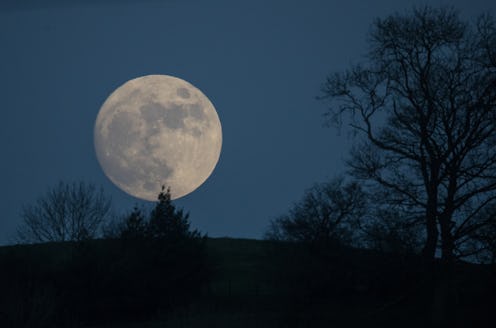Life
Why Does May's Full Moon Have A Different Name?

A full moon is coming, and it's got some serious flower power. But why, exactly, is the May full moon called the Flower Moon? Well, according to the Old Farmer's Almanac, it was given its name back in Native American and Colonial times, along with the rest of the full moons throughout the year. To signify the change in seasons and passing time, each full moon was given its own nickname. In China, the full moon in May is called the Dragon Moon. And in the southern hemisphere, where the seasons are swapped, this moon is known as the Hunter's Moon, Beaver Moon, and Frost Moon.
Unfortunately, the Flower Moon doesn't represent anything particularly mind-blowing as flower shapes on the moon's surface, or flowers simultaneously blooming the moment the moon is full. (That'd be rad though, wouldn't it?)
The Flower Moon got its name to simply represent the time of year when plants are in bloom. And depending on the Native American tribe, it was also referred to as the Milk Moon, and the Full Corn Planting Moon. The Flower Moon is also said to mark a time of "increasing fertility with temperatures warm enough for safely bearing young, a near end to late frosts, and plants in bloom." So if you're looking to make a baby, this might be a good time to get busy.
And if you really want to stick to the old superstitions tied to this moon, you should be aware that "clothes washed for the first time in the Full Moon will not last long" and a full moon is also "an ideal time to accept a proposal of marriage."
The Flower Moon will can be seen on May 10 this year, at 5:43 p.m. EST, and the new moon will occur on May 25 at 3:44 p.m ET, marking the astrological transition into the Gemini sign. So mark your calendars and get ready to watch those flowers do a little dancing.